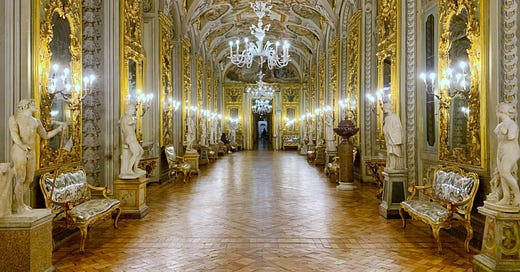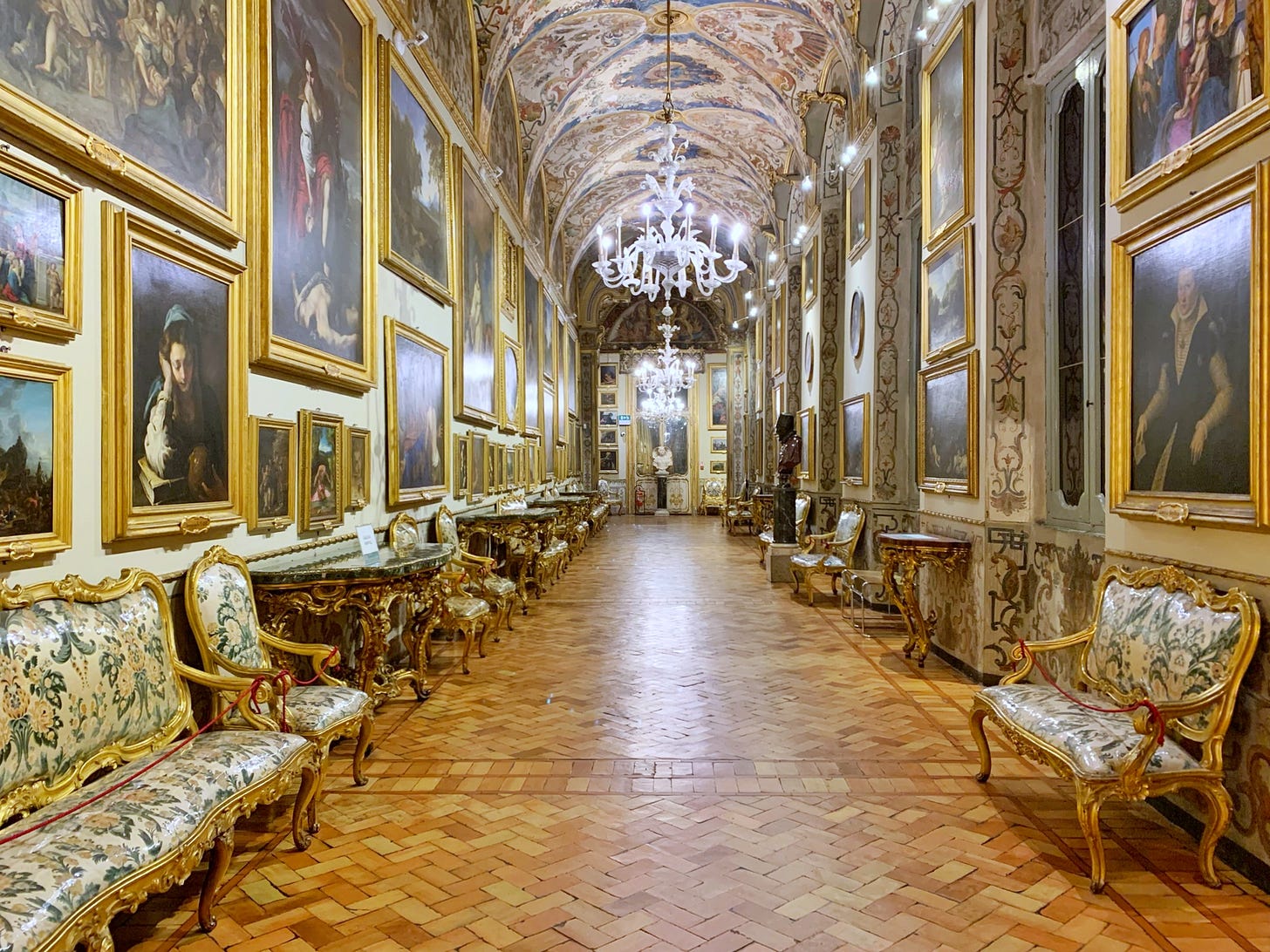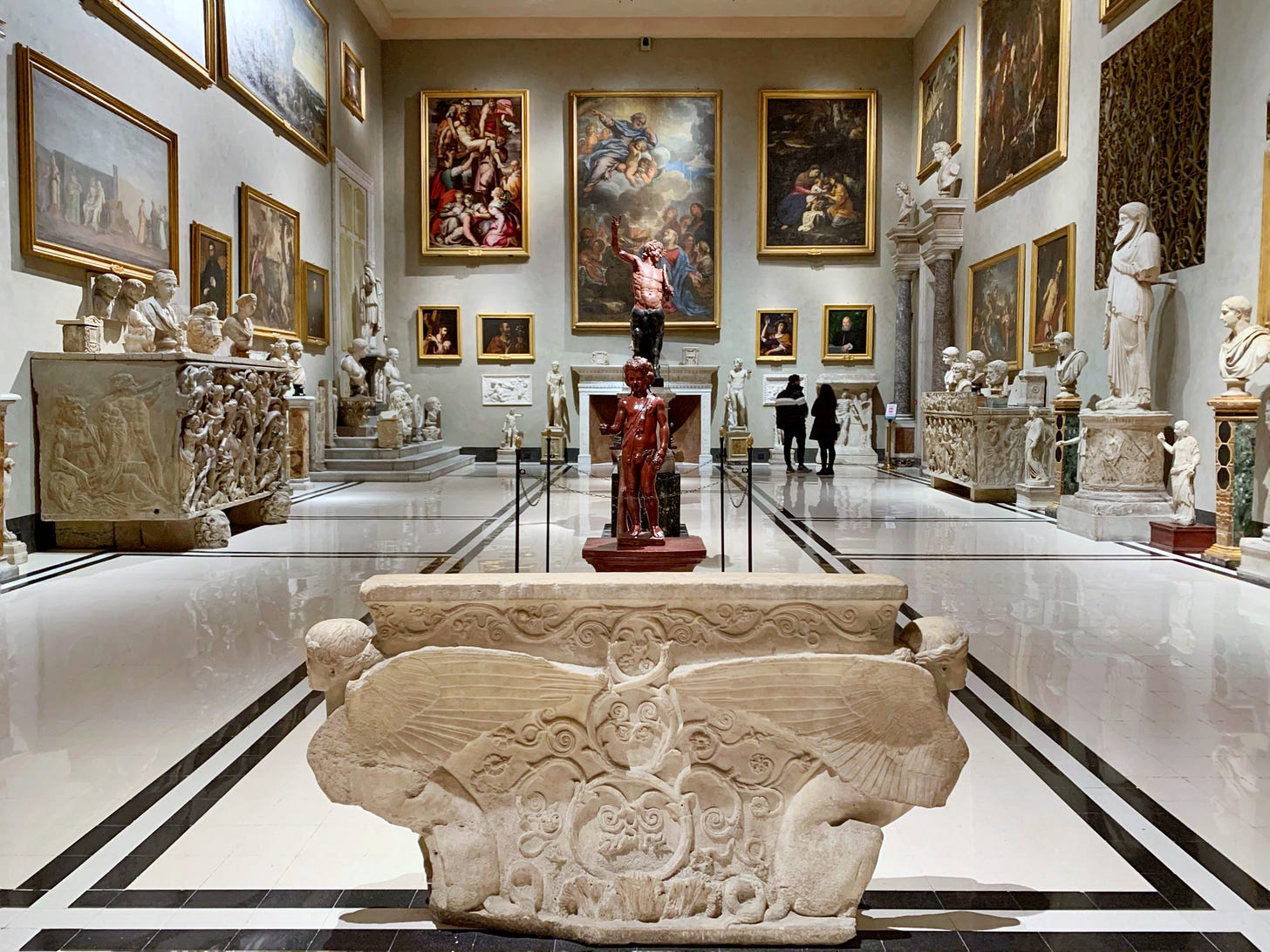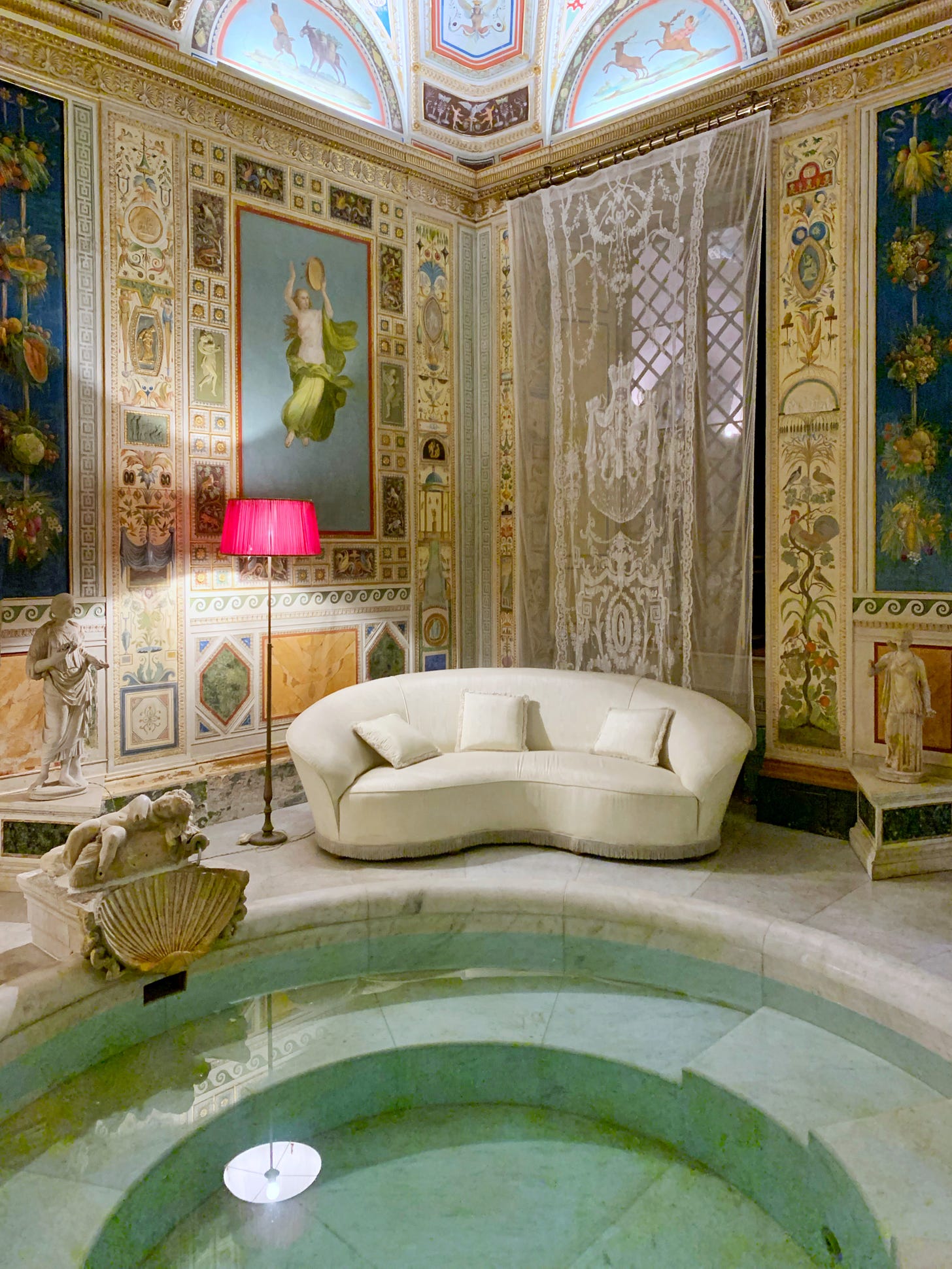Peek Inside Palazzo Doria Pamphilj, One of Rome's Most Spectacular Aristocratic Palaces
Issue #103
Did you know that one of Rome’s most spectacular aristocratic palaces is hiding in plain sight on one of the city’s busiest thoroughfares? Built in the 16th century, the palazzo is located on Via del Corso, just a couple of blocks from Piazza Venezia. A reader who responded to my recent survey (which is still open to responses, by the way) asked if it’s worth a visit—and my answer is a resounding yes.
Entering off Via del Corso, you find yourself in a peaceful courtyard framed by arches. Part of it has been turned into a chic restaurant, but walk straight and you’ll find the ticket office on the left. Tickets cost €16 and if the Secret Apartment is open, I recommend adding it onto your visit. Ticket in hand, you’ll then go upstairs to the galleries.
The room that makes the biggest impression is without a doubt the Hall of Mirrors, which might remind you of the one in Versailles. Except instead of navigating your way through selfie-taking crowds, here you’re likely to have it all to yourself. (If you want to be sure to have it all to yourself, I suggest going in the evening an hour before the museum closes. On Fridays, Saturdays, and Sundays it stays open until 8 p.m. Monday through Thursday, it closes at 7 p.m.) The 17th-century gallery features gold-framed Venetian mirrors, chandeliers, antique archeological statues, and ceiling frescoes that depict the Labors of Hercules.
At the end of the Hall of Mirrors is the Velázquez Cabinet, which contains a portrait of Pope Innocent X (the Pamphilj pope) dated 1650 by the Spanish painter alongside a bust of the pope by Bernini. And these are just a couple of the many priceless works of art in the palazzo. In the rooms connected to the Hall of Mirrors, paintings crowd the walls from top to bottom, displayed in the 18th-century manner.
Branching off of it are the Ballroom, the Velvet Room, and several other rooms. Perusing the various galleries is like a treasure hunt for art lovers. You might spot a painting by Raphel, Titian, or Caravaggio. The Aldobrandini Hall contains ancient statues, busts, and sarcophagi.
The private apartments on the piano nobile have been home to princes and princesses since Prince Camillo Pamphilj moved into the palazzo in the 17th century and are still inhabited by descendants of the family. Though you can’t visit the private apartments on the piano nobile, you might be able to peek inside the Secret Apartment, which is full of antique furniture and décor.
Gazing upon the writing desk with leather-bound journals and an old rotary phone, the dressing table with framed photographs and little silver trays, and even a hairbrush and perfume bottle in the bathroom made me feel like I had stepped back in time, or perhaps walked onto the set of La Grande Bellezza.
Maybe one day I’ll be lucky enough to meet a member of the Doria Pamphilj family, which has a long and fascinating history that can be traced at least as far back as the 15th century. A pope, princes and princesses, and even a mayor of Rome who was a vocal opponent of Mussolini’s Fascist regime have all left their mark. They and their palazzo are as much a part of Roman history as the Colosseum and the Vatican.
Further Reading
Want to learn about other aristocratic palaces you can visit in Rome? Check out my list of 10 underrated museums in Rome, which includes Palazzo Doria Pamphilj, among others.
I also dedicated a past issue of the New Roman Times to Villa Medici, the French Academy in Rome, which is undergoing a multi-phase restyling by Fendi and lauded designer India Mahdavi.
For even more palace content, check out this issue about the Royal Palace in Turin, Italy’s first capital, and this issue about visiting the Reggia di Caserta and eating Italy’s best pizza.
You can see all of the New Roman Times’ articles about under-the-radar destinations here.









Wow-- this is crazy. That private apartment is so far over the top you might as well be floating. Definitely putting this on the must-see list. Wonderful post.
This is one of my favorite places in Rome! I recommend reading Mistress of the Vatican by Eleanor Herman. This is a fascinating book about Olympia Maidalchini who married into the Pamphilij family.